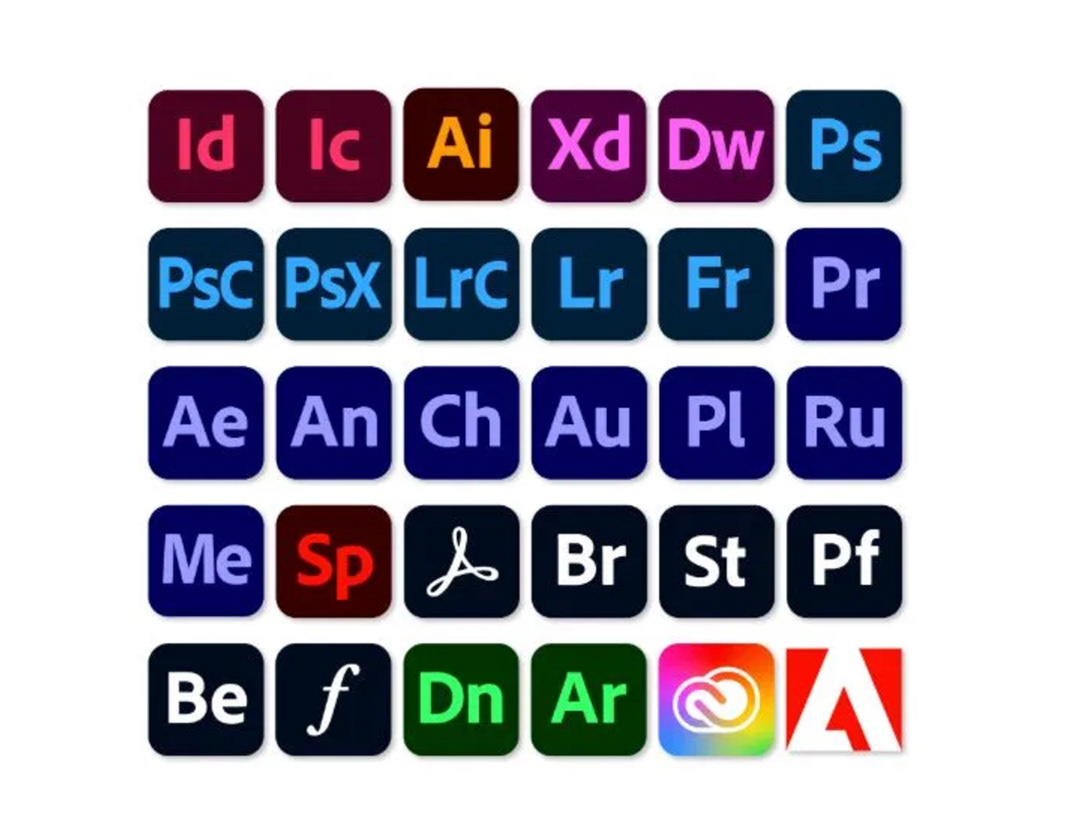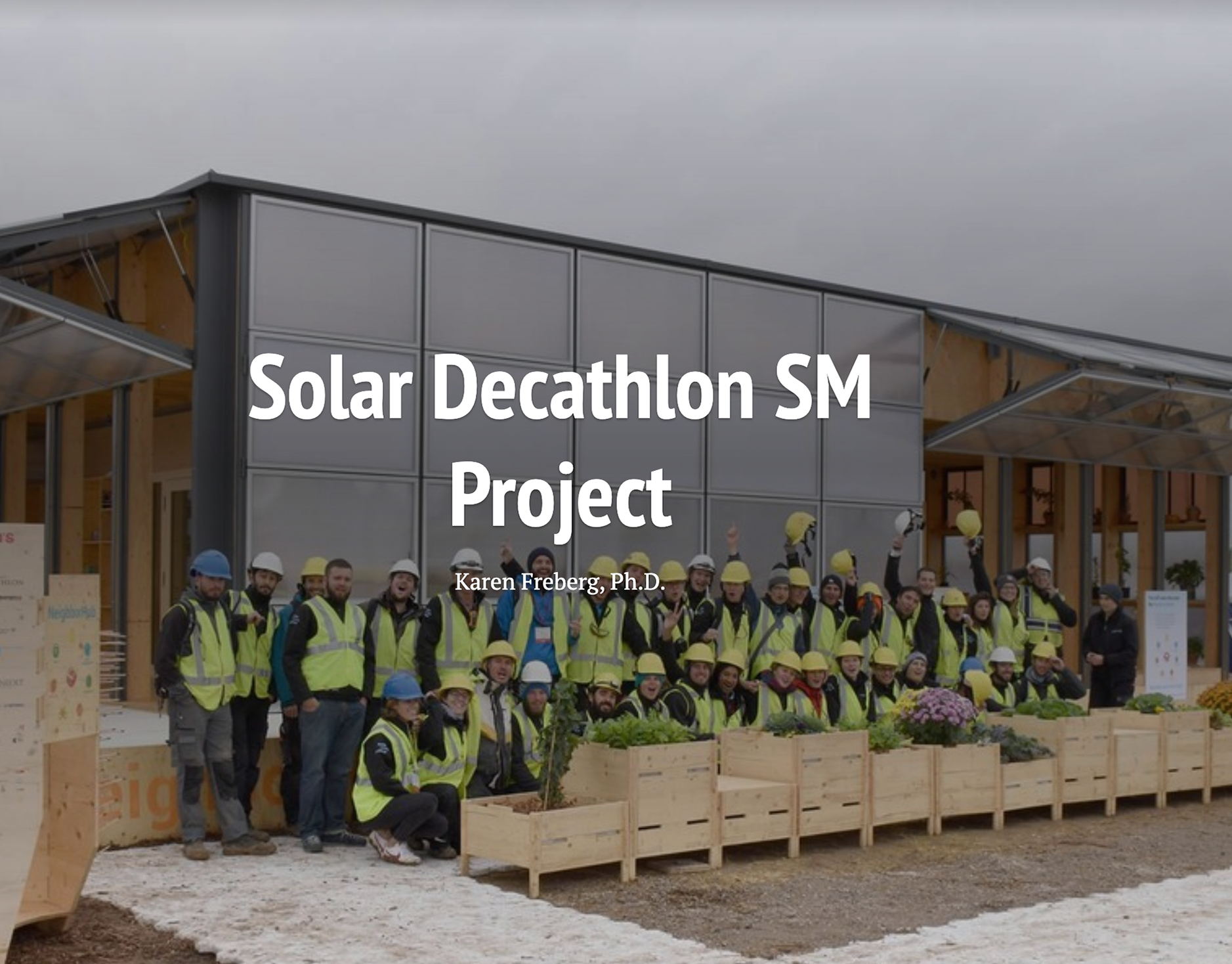Speeches have made a huge impact on civilization because, as a technology, they’ve worked so well. They’re particularly effective and engaging because they’re leveraged on human connection — because they’re most typically face-to-face — the speaker's human (inter)face engaging with the audience's human (inter)faces. So, when using a Creative Cloud application like Spark Page to support a speech, keep in mind that your audience wants to connect with you, the speaker, not your project slide deck. How best to use presentation software to promote human connection and avoid digital distraction?
In the previous section, I said that presentation applications make it easier than ever to (1) engage your audience visually, (2) organize and present your ideas clearly and logically, and (3) discover and develop your thoughts in the first place.
Adobe Spark for a high-quality visual narrative
The DNA of today’s oral presentations increasingly expects you to offer a visual component. Of course, speeches are often given only with the visual complement of body language and the scene — think of a political leader giving an address in front of a legislative body. But, for students and many professionals, we’re expected to prepare a visual complement to a spoken speech.
The standard format for such visual presentations is to prepare a “slide deck,” with a colorful template, that is mostly text-driven. Here are the cardinal sins to avoid in preparing a slide deck for a speech:
> Cramming the slides full of dense text
> Reading dense text from the slides
> Turning your back on your audience and talking to the screen behind you instead of facing your audience
> Gimmicky animations of text and transitions that draw attention to the slide deck and away from the thoughts you’re presenting
> Images that are poorly photographed or formatted
> Embedded media elements that do not play smoothly or clearly
> Pictures of kittens
(Okay, that last one was to just to see if you’re paying close attention — love cats, but the kitten-pic gimmick has gone too far.) Each of the cardinal sins above undermines the primary purpose of a presentation, which is to promote connection between speakers, their audiences, and thoughtful ideas.
Slide decks, when used appropriately, however, do these things:
> Use text only to highlight key terms explained, explored, or (re)defined in the speech
> Use colorful, high-quality photographs and graphics that complement the speech, the way that the visual narrative in a good film works in parallel, not competition, with the dialogue and music
> Provide simple, easy-to-read, colorful tables and graphs as elegant representations of complicated data and numbers
> Create a structural outline of topics and prompt you to organize the speech so that you talk naturally and conversationally with your audience
> Leave your audience with a record or artifact of your presentation to consult later to refresh their thinking
> Spark Page is the ideal application for all of these principles, because its interface is designed according to these principles, although you could still use it inappropriately if you really try hard.
Spark Page is so intuitive and user friendly that it’s the only application I teach to my students by telling them to go home and figure it out without my help. This means that you can focus more time on developing the quality of the ideas and words you’ll say, because the visual presentation is so easy to put together. You can upload any image you want into Spark Page, and it has an incredibly powerful built-in search engine that locates only high-quality images from Creative Commons, which means you’re free to use them — Spark even embeds credits for the image at the end of your Page! This makes it so easy to accomplish what was so difficult before: finding and embedding high-quality images as a “visual narrative” to support, rather than distract from, the vocal narrative.
Adobe Spark Page for organizing your presentation (instead of “decking” your audience)
The Spark Page interface is one continuous, vertical scroll, instead of the horizontally flipping slides in a conventional presentation deck. Today’s audiences will find any innovation on the overdone slide deck engaging, although the best thing about such presentations is that they tended to be well structured into bite-sized chunks, which is important for delivering ideas verbally instead of in writing. We need structural visual cues to help us process information.
The Spark Page interface is one continuous, vertical scroll, instead of the horizontally flipping slides in a conventional presentation deck. Today’s audiences will find any innovation on the overdone slide deck engaging, although the best thing about such presentations is that they tended to be well structured into bite-sized chunks, which is important for delivering ideas verbally instead of in writing. We need structural visual cues to help us process information.
The Spark Page interface is a collection of simple “plus buttons” that add one element after another, sequential, in a vertically scrolling list to provide structure to your presentation. Additionally, because Spark Page is connected with Creative Cloud, the media elements you add are formatted beautifully and professionally, whereas a slide deck can be hit-or-miss in terms of whether or not your image, video, or audio will be formatted correctly. The plus buttons make it easy to add text, images, and video. Spark Page also has built-in, tasteful transition animations that make your presentation visually dynamic without being gimmicky. My students like the “Glide-show” function in particular, and you don’t have to program these animations at all.
The result is a satin-smooth presentation that flows naturally and is visually appealing without distracting from the speech. You could, still, of course, kill your audience by making your Spark Page crammed full of text, but the application and the interface really beg for you to foreground image elements more than text.
And speaking of smooth, Spark is online, responsive, and cloud-based. This means that each Spark Page has a unique URL that can be shared with your audience, if they wish to return to your visual presentation later. Spark Page presentations are also responsive, which means that they adjust to the size of the device, so they can look just as good on big-screen projection as well as a mobile device. You do need an Internet connection to project a Spark Page, but this means you can use any computer connected online for your presentation.
Spark Page for discovering and developing your ideas in the first place
Most of us get so anxious about the future moment we must deliver a talk that we focus too much only on the end-game. We can get too obsessed with the finished product created with our presentation software. However, I know a number of professionals and students alike who have almost accidentally discovered that presentation tools, like Spark Page, can help generate ideas and get their research and writing going in the first place. I have used Spark Page to help a number of students overcome writer’s block, even if they aren’t going to deliver an oral presentation!
There’s something about the organic, intuitive flow of Spark Page that can get ideas going. There’s also something about the easy interplay between images and text that can spark your imagination. Further, I believe that once you use Spark Page to deliver a presentation and you see how naturally your Pages are meant to be shared online this way, then it becomes easier to envision and understand your audience — and remember the first point we made above: Oral presentations are all about human connection.
The interface for Spark Page demands that you sequence one idea beneath another, which helps you achieve an important goal of analytic thinking: coordination and subordination of thoughts. Which big ideas should come first? Which examples and illustrations best support your big ideas? Which opening screen best sets a tone? Which final screen wraps it all up?
Other Creative Cloud applications for oral presentations
Because so many Creative Cloud applications, like Photoshop, Illustrator, and InDesign are so powerful for producing visual material, they can also be used to create slides or elements for an oral presentation. You might use Photoshop, especially, to prepare high-quality images for the visual narrative in your presentation, regardless of the application you use to deliver your talk. I should admit up front that I often use Premiere Pro to create videos that run in the background of my oral presentations. I embed chapter cue points in these films so that I can jump from point to point in my “backdrop film,” as I adjust the timing of my talk live (which I never script to the very second.) I don’t recommend that most people try my Premiere Pro approach, however, and, the truth is that I am using Spark Page for all of my lectures and talks these days.
Principle #2 in Section 2b is that within Creative Cloud “there are many paths to god,” which means that there many ways to use these powerful applications to make just about anything, especially the visual components of a speech, lecture, talk, or sales pitch. You could even trick Lightroom to create a bunch of slides and simply browse through them like you would a photo collection. It’s just that, for most students and most academic purposes, Spark Page is so well designed according to the DNA of an oral presentation, that it’s really the best place to start.



